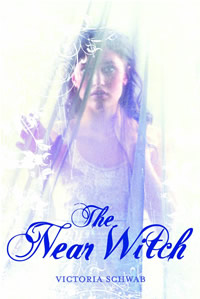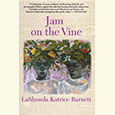Potter 2G
Victoria Schwab grew up with her head in J.K. Rowling’s fictional world; now she’s writing fiction of her own
If someone were to write a study of contemporary young-adult literature (and someone, somewhere, is no doubt doing just that), one logical division of eras would be BP/AP: Before Potter, After Potter. The colossal effect of Harry Potter on YA publishing has been noted for years—a boom for the genre at large, store shelves crowded with fantasies and Potteresque narratives—but only recently has another interesting aftereffect begun to emerge: Generation Potter’s own contribution to YA lit. Those who fell in love with J.K. Rowling’s world as children are now young adults and twenty-somethings, and a notable number of them are beginning to publish their own magic-tinged tales.
Victoria Schwab, a twenty-three-year-old Nashvillian, is one such young writer, having finished a draft of her debut novel during her senior year of college. Schwab’s childhood immersion in all things Potter set her on course to study classic fairy tales, as well as writers like Kate Bernheimer and Kelly Link, who are among a number of contemporary authors revitalizing the ancient genre. Darkly atmospheric, The Near Witch is an accomplished take on the form, artfully deploying many of its traditional elements: a seemingly distant time and place, a dark forest, children, a young person on a quest, and, of course, witches.
 In the book, an unfamiliar boy shows up in the insular village of Near, which has not been visited by strangers in decades. Soon, children are going missing from their homes, night after night. The villagers are quick to finger the stranger, who slips into hiding. Only a young girl, Lexi, who narrates the story and strikes out on a search for the children, is convinced that the strange boy is not to blame.
In the book, an unfamiliar boy shows up in the insular village of Near, which has not been visited by strangers in decades. Soon, children are going missing from their homes, night after night. The villagers are quick to finger the stranger, who slips into hiding. Only a young girl, Lexi, who narrates the story and strikes out on a search for the children, is convinced that the strange boy is not to blame.
Young Lexi will be an irresistible figure to female and male readers alike. A brave and unwavering girl who rejects the conventional trappings of girlhood, Lexi is proud to carry on the tracking tradition of her late, beloved father, whose knife she carries and whose old leather boots she wears despite the stern disapproval of her uncle Otto. In her search for the missing children, Lexi is at odds with Otto and his cohorts—men from the Council, a governing body—who join forces with him in their own search for the stranger. They feel no need to prove the boy’s guilt; he is a convenient scapegoat, and the men care only that his capture will set the town at ease.
Lexi soon finds the mysterious boy, whom she christens Cole after he refuses to give her his name. With the help of two old sisters, Magda and Dreska, who live on the fringes of Near, she sets out to solve the mystery of the disappearances and return the children safely to their families. The sisters are witches—“And witches are not so welcome here,” Lexi says. “Everyone else in the village turns their back on the sisters, pretends they are not here, and seems to do a decent job of forgetting. But to me they are like gravity, with their own strange pull, and whenever I have nowhere to go, my feet take me there.” Cole, who has special powers of his own, allies himself with Lexi too, but she must also keep him hidden from Otto and the Council.
 On an allegorical level, the book thoughtfully addresses the problem of xenophobia. Thinking about the shunned witch-sisters, Lexi recalls her father’s wisdom: “Fear is a strange thing,” he told her. “It has the power to make people close their eyes, turn away. Nothing good grows out of fear.” Later, she observes, “The Council has always led Near through fear. Fear of what had happened. What might happen again.” The village, which Schwab describes in the simple yet evocative style of classic fairy tales, physically manifests its isolationist ways: “There’s no wall around it,” Lexi says, “but everyone seems to know where it ends and where the countryside begins.” In lieu of a wall, a rough, rocky moor, whipped by wind, encircles Near; a place that villagers mostly avoid, it functions much as a character itself.
On an allegorical level, the book thoughtfully addresses the problem of xenophobia. Thinking about the shunned witch-sisters, Lexi recalls her father’s wisdom: “Fear is a strange thing,” he told her. “It has the power to make people close their eyes, turn away. Nothing good grows out of fear.” Later, she observes, “The Council has always led Near through fear. Fear of what had happened. What might happen again.” The village, which Schwab describes in the simple yet evocative style of classic fairy tales, physically manifests its isolationist ways: “There’s no wall around it,” Lexi says, “but everyone seems to know where it ends and where the countryside begins.” In lieu of a wall, a rough, rocky moor, whipped by wind, encircles Near; a place that villagers mostly avoid, it functions much as a character itself.
Schwab cloaks her story in dark, earthy hues and displays a steady hand in her use of spooky details and descriptive passages. “A crow floats overhead like a smudge on the night sky,” she writes in one scene. Sound, particularly that of the ever-present wind—it moans, hisses, sighs, howls, whispers—features prominently in her atmospherics. When Lexi visits Magda and Dreska for the first time, she senses that she is not alone in a grove of trees: “Something is breathing, moving, just beyond my sight. I hold my breath, letting the breeze and the hush and the sighing moor slip away into ambient noise. I scan with my ears, waiting for a sound to emerge from the sea of whispers, scan with my eyes, waiting for something to move.”
Through passages like this one, Schwab builds narrative tension slowly and steadily, then ratchets up the pace a bit in the book’s final stretch, which includes a few deliciously grotesque scenes. Along the way, she weaves in elements of both romance and horror, both pleasures sure to endear The Near Witch to the next generation of YA readers.
Victoria Schwab will read from The Near Witch as part of the “Ash To Nash Tour” of YA writers. They will be in Kingsport on August 6, Knoxville on August 7, and Brentwood on August 8. For details, visit the tour’s website here.


